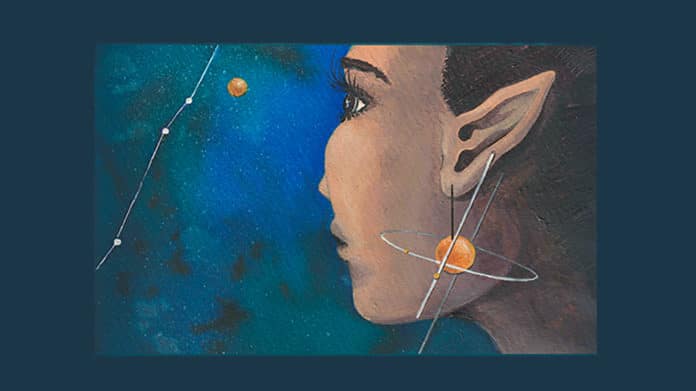According to theories of the origin of planetary systems, planets form in the equatorial plane of their star. They continue to evolve there unless any special event disturbs the process.
In 2019, it was found that two of the three planets around the star HD3167 in the Pisces constellation are not aligned with it. Two of the three planets around the star HD3167 are not aligned with it. Those two planets, HD3167c and HD3167d, are two mini-Neptunes that orbit in 8.5 and 29.8 days, actually pass over the star’s poles, nearly 90 degrees from its equatorial plane.
In this new study, an international team, led by astronomers from the University of Geneva (UNIGE), Switzerland, reobserved the system. They measured the orientation of the third planet’s orbital plane, the super-earth HD3167b, which orbits in less than a day (23 hours exactly).
When a planet transits its star, the orientation of its orbit can be determined with a spectrograph, which allows measuring the motion of the stellar regions occulted by the planet and thus deducing its trajectory. The smaller the planet, the more difficult this motion is to detect.
Using observational data from ESPRESSO, scientists determined the orbit of HD3167b, which happens to be aligned with the star and perpendicular to the orbital plane of its two siblings.
Vincent Bourrier, a researcher at the Department of Astronomy of the Faculty of Science of the UNIGE, said, “We needed a maximum of light and a very precise spectrograph to be able to measure the signal of such a small planet. Two conditions are met by the precision of ESPRESSO, combined with the collecting power of the VLT.”
The team turned to the CHEOPS satellite consortium to determine when HD3167b transits its star.
Christophe Lovis, a researcher in the Department of Astronomy of the UNIGE and member of the two consortia, said, “CHEOPS allowed us to know the time of transit with a precision better than one minute. This is a good illustration of the synergy there can be between different instruments, here CHEOPS and ESPRESSO, and the teams that operate them.”
Authors noted, “These new measurements seem to confirm the prediction made in 2019 on the presence of a fourth body orbiting HD3167. In this scenario, HD3167b’s proximity to the star kept it under its influence, forcing the small planet to orbit in the plane in which it formed. On the contrary, the two more distant mini-Neptunes were able to free themselves from the star only to fall under the influence of this fourth body, which would have gradually misaligned their orbits.”
Journal Reference:
- V. Bourrier et al. The Rossiter–McLaughlin effect revolutions: an ultra-short period planet and a warm mini-Neptune on perpendicular orbits★. DOI: 10.1051/0004-6361/202141527
